REVIEWS PART 3.5: THE SAFE, SIMPLE SOLUTION
All reviews by @Edsel, with limited edits
I noticed some issues with the Hakaru and Nerruci after publishing, and amended those reviews

Now it’s time to look at the mass market- the “standard” segment. Anything under $20,000 that doesn’t fit into any other category, Note that the word “standard” is used here in heavy quotes, because the late 60’s Aragan market was not your standard market. First of all, Araga’s economic boom had made it wealthy even by first-world standards, and the people were interested in flaunting that wealth. So Araga’s standard for what was considered “Standard” drifted into cars that would have been “premium” anywhere else.
And we must also address what the safety scare meant from a market perspective. With literally every extant car abruptly ripped off the road, the entire motoring population suddenly needs a new car at once! And sure, Araga’s excellent rail network and booming rental-car industry have reduced the size of that population, but the remainder was still more than enough to overwhelm new-car supply chains.
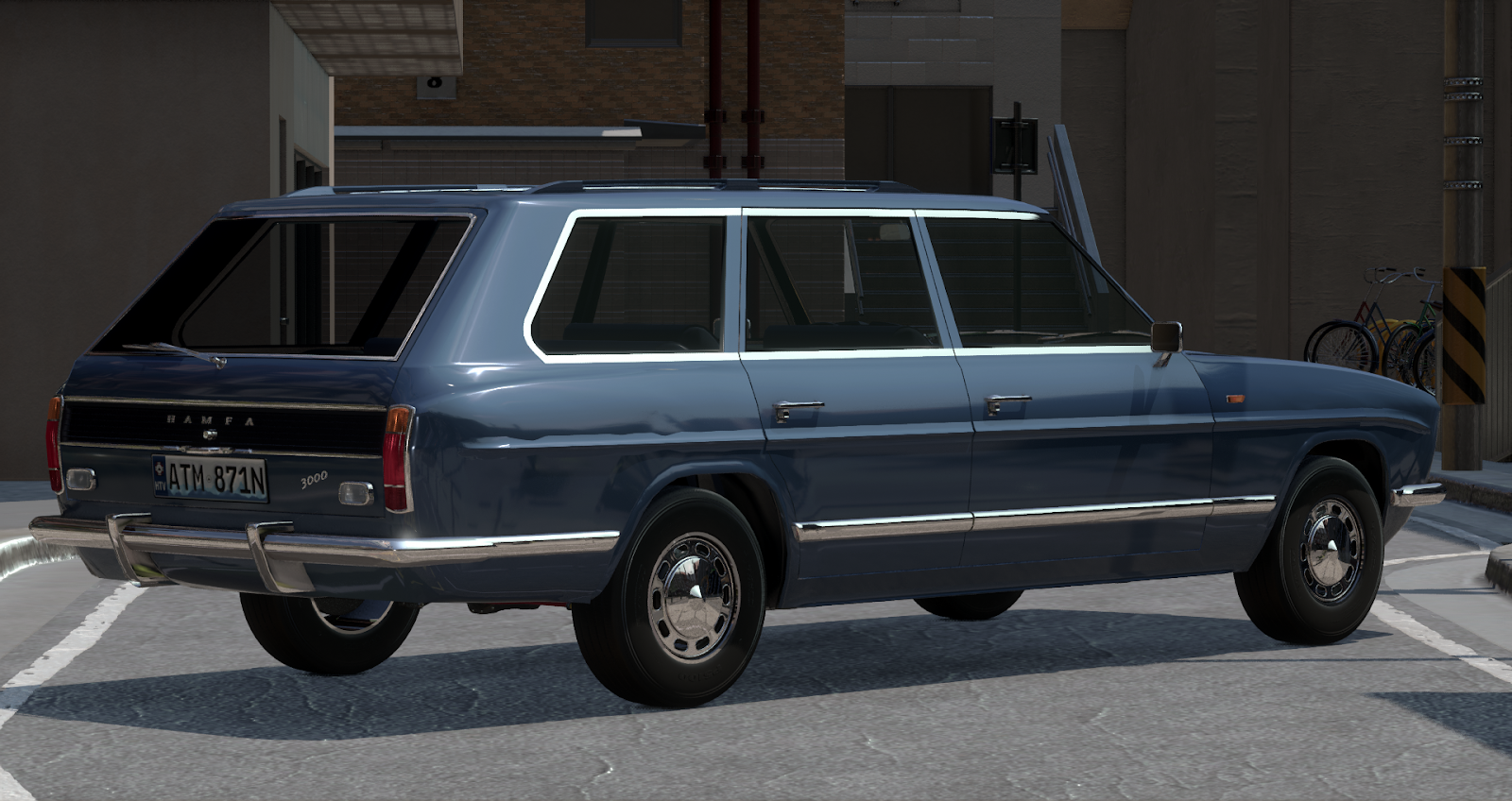
(Hamfa 3000 Kombi by @Ch_Flash)
To unpack how all this plays out, let’s start with the only 2 cars that would’ve truly been considered “standard” in any other market. Both were released in 1965.
At $10,700, the Hamfa 3000 Kombi was one of the cheapest new cars on the entire public market. And for being the only affordable wagon at all in 1965 (unless you had $51,000 to splurge on a Rosanda), Araga was quite fortunate that it turned out to be a good one, with well-rounded stats across the board. It didn’t feel like a “cheapest car,” either, thanks to its premium interior + radio and medium compound tires. Looks wise, the car was mostly pretty mundane, but it had just enough accents & chrome to at least blend in with the more expensive traffic around it.
A 3m wheelbase also gave it both the most passenger and the most cargo space for its segment. But all that space was kinda rendered worthless by the one thing Hamfa had cheaped out on; standard springs. Soft, low-load standard springs… in a wagon! The car barely had enough load capacity to hold the 5 people in its seats! Performance was also sub-par; its size and 3L I6 gave it “only average” acceleration figures, in exchange for disappointing fuel economy (15.3L/100km) and a somewhat-high $504/year tax.
But hey, in this economy, most could easily afford to handle those costs, and Araga’s flourishing aftermarket scene was quick to offer suspension upgrades. So in spite of these issues, the Kombi’s competence, well-rounded nature, and lack of true competitors made it one of the most sought-after cars in the entire Aragan market- and by proxy, one of the hardest cars to get a hold of. Even a high-volume manufacturer like Hamfa couldn’t hope to keep up with such a surge in demand, and those who buy this type of car generally intend to keep them quite a while (unless you count the scalpers), so not everyone who wanted a Hamfa actually managed to get ahold of one.

(Nerruci Phantom by @04mmar)
That’s where the 1965 Nerruci Phantom fits in; it’s main demographic consisted of people who’d failed to get a Kombi, since it was the only other ‘65 car priced and sized competitively. And while that doesn’t sound very good, that’s actually about the best thing that could’ve happened to it, as the Phantom would’ve never done well otherwise. It was rife with problems, rooted in what appeared to be an identity crisis in its engineering: Is this car supposed to be a comfortable cruiser, or a sports car?
See, the Phantom looks like a sports car: big lips, quad exhaust, just general muscley-ness. And it has some parts of a sports car: limited-slip, 4 wheel discs, and a performance-tuned engine with - get this - mechanical fuel injection?! Pretty-fine performance tech for '65! …Except, there’s nothing sporty about the Phantom. That fuel-injected 2.5L Boxer-6 only made 137 horsepower, just 12 more than the carburated Kombi- and not enough to incur wheelspin, invalidating the LSD. The car also came with a washy 3-speed automatic that made it slower than the Kombi (despite being slightly lighter and more powerful), and too slow to make much use of its aero fixtures. The brake tuning was also off; the rear brakes locked before the front, making it prone to spin out in hard braking. And while on paper the handling was ok, you couldn’t enjoy any of it thanks to its soft, comfort-tuned suspension and soulless ball steering (it has the worst sportiness and drivability in the segment!).
Now, the Phantom did sort of succeed on the comfort front. Its standard-but-spacious interior was the cheapest of its time to offer an 8 track, and with a great sound system at that. It was also the cheapest car with an automatic by a wide margin. All that high-performance tech in a low-performance car did nothing but drive up its purchase and repair costs, and drive down its efficiency and reliability… And there’s another big, dirty secret. Nerruci applied zero rustproofing to their cars, unlike every other commuter car on the market. The result is a confusing car with an identity crisis that doesn’t particularly hold together well.
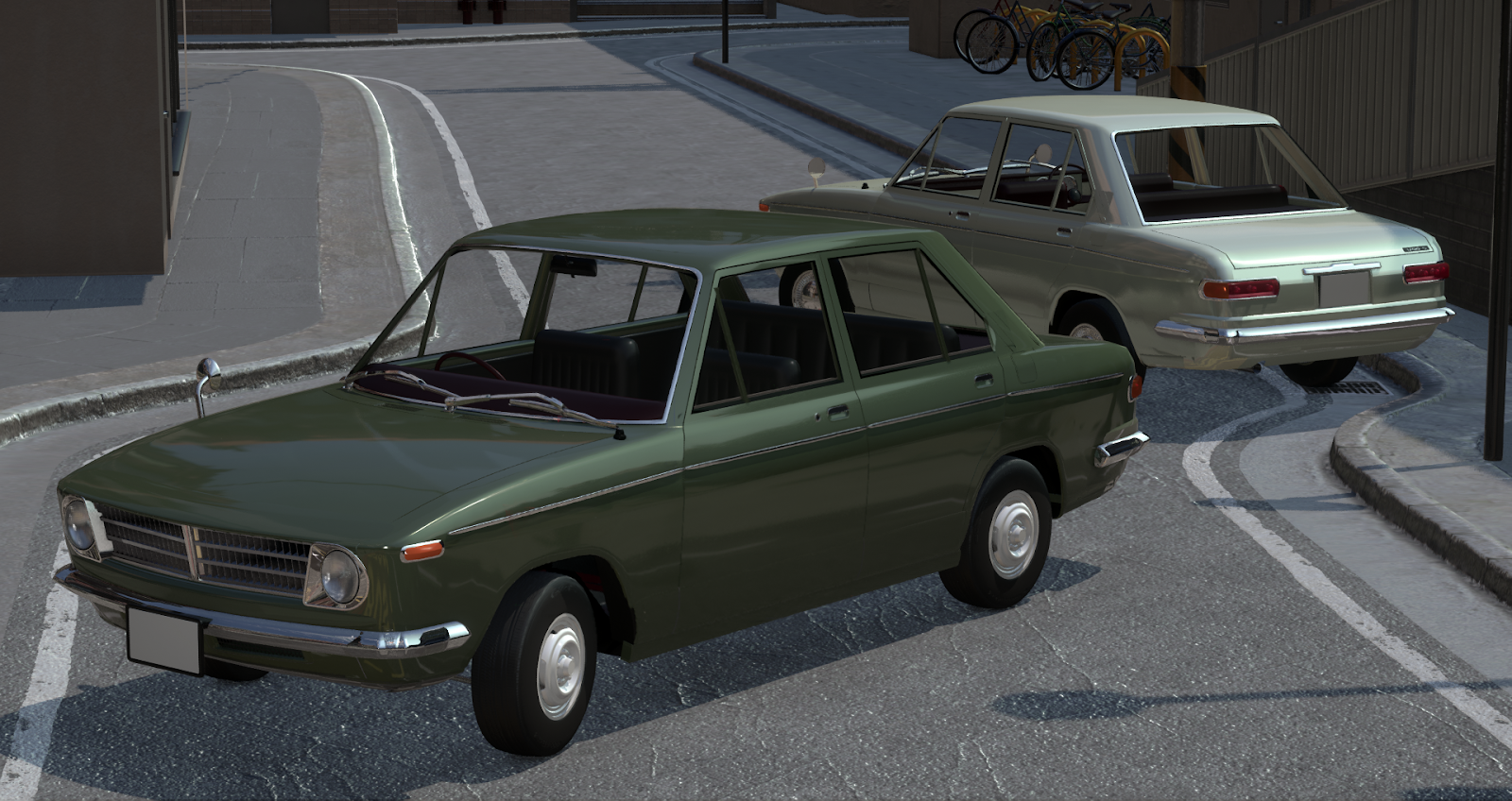
(Hakaru 1100 B and S by @Executive)
Now, onto the only true budget car in Araga in this era, and the by-far cheapest car that hadn’t been reserved for hire-car service: The 1965 Hakaru Carcia.
While most manufacturers were pushing further and further upmarket, the only luxury Hakaru offered was standard seats/radio; other than that, the car was basic even by international standards. You didn’t even get the luxury of choice; besides than a selection of muted, earth-tone colors, the only options were 2 dealer-installed extras (hubcaps or a passenger mirror), and 2 variants of the same engine, which only differed by 100cm³ of displacement (1.1L vs, 1.2L). Their difference in performance was so minor, it’s not worth distinguishing between them.
For most Aragans, this was just too basic, too devoid of features and comforts to be worth buying. It looked cheap, too; it didn’t look like a flat out lemon, but in a market full of flashy, premium cars, it was an embarrassment to have to explain that something that simple, that un-decorated and function-over-form, wasn’t a rental. And then consider the lack of power: remember when we derided the Phantom for being slow? That one took 12.5 seconds to reach 100kmh. The slowest Carcias needed over 20, which was almost dangerously inadequate in highway traffic!
Speaking of danger, there was another one waiting once you got to speed; terminal oversteer! Remember, one of the issues that started this whole safety scare, with the Garland and Schnell a few years earlier? Right in the first year of a radical new safety policy, a car had already come out with the same problem! It was fairly subtle, admittedly; it only seemed to occur in sharp, emergency maneuvers, when stable handling is most vital. Also, urban legend said it somehow happened more in 1.1L models than 1.2L ones, though this was never formally tested.
Once word got out about this, it quickly ballooned into a major scandal and huge embarrassment- not just for Hakaru, but for the government as well. See, the new safety-rating system only tested crash performance, and the Carcia’s monocoque structure did perform well once in a crash, so the government gave it a good rating. But people quickly realised crash performance meant little when the chance of crashing in the first place was so high, causing a great many debates about the system itself. The issue was, this wasn’t the only issue with the Hakaru. See, the quality of fuel can vary from batch to batch, and the effective octane rating of fuel goes down at altitude. Some manufacturers make sure to set up their cars with looser tolerances to accept worse fuels and higher altitudes. Hakaru… did not do this. They did the opposite of this. Take it up above sea level, get anything other than the absolute batch of fuel the service station has received, it knocks. It really wants 94 RON fuel, and even then it’s on the edge of knocking.
It at least manages good fuel economy, but purely by virtue of being gutless, heartless and depressing. The pushrod engine reportedly gets below 5% in terms of thermal efficiency, while the worst other engines outside of the sports segment are all above 11%. It’s so impotent and low-powered that it still doesn’t use much fuel, but it could still use less.
You could potentially soldier through the issues. Drive it slow and the terminal oversteer doesn’t come up. Retune the suspension, swap out the engine for something that actually cares about efficiency. After you do all that, if you didn’t value your time, you probably still spent less… So everyone who could avoid buying one did, but the people who couldn’t afford anything better - or who couldn’t afford not to have a car, and couldn’t find anything better - suffered through it and tried to make it better.
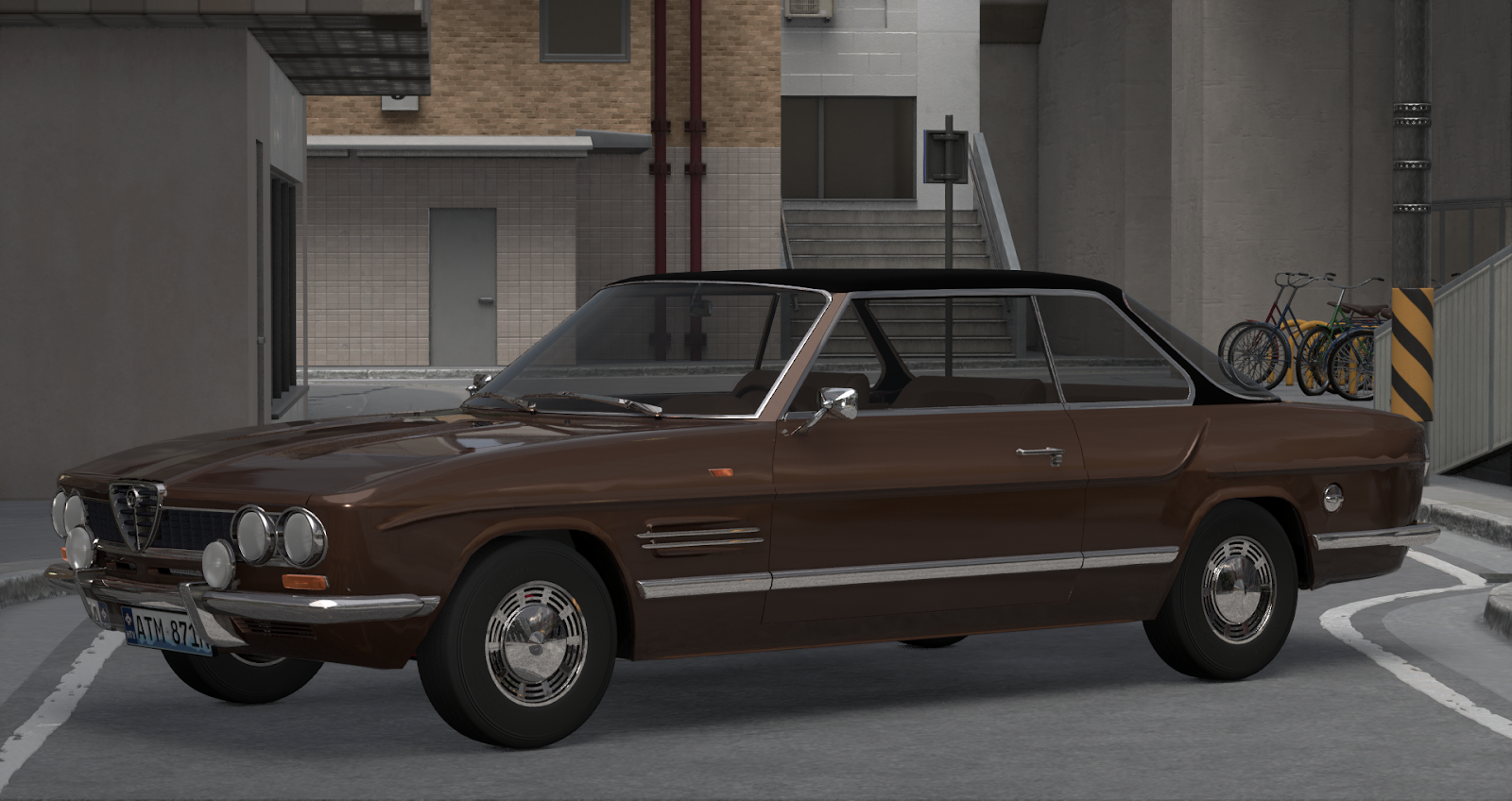
(Hamfa 3000 Coupe by @Ch_Flash)
Now we start with the cars that are only “standard” in the context of a fairly premium market. At $16,300, the 1966 Hamfa 3000 Coupe was about in the range of what Aragans thought of as “normal.” While based on the already-popular Kombi wagon, this coupe version followed a very different philosophy to its practical and utilitarian sibling, being a well-appointed and comfortable commuter for individuals or couples living alone.
The coupe carried the same 3L engine as the wagon, but fitted with dual overhead cams (a segment exclusive) and a carburetor upgrade to earn it 170hp and a theoretical top speed just over 200kmh. An LSD and 4-wheel discs were also provided to help control that power. But to be clear, this was not a performance car; this was a personal luxury coupe, with a stable-but-soft suspension and a Luxury grade interior, with a luxury-grade sound system to match! It was by far the cheapest such interior in Araga, and without any cut-corners in build quality.
Unfortunately, not only had it inherited the Kombi’s poor fuel economy and high taxes, but it also proved costly to service thanks to said top-spec interior. It was also a bit space-inefficient; a 3m wheelbase is a bit much for a 4-seater car, and yet Hamfa’d only been able to fit jump seats in the rear? At least the trunk was fairly spacious; and you could actually put stuff in it, since the coupe had the progressive springs that the Kombi should’ve had.
When you take the rest of the Aragan market into account, though, the ownership costs weren’t actually too bad. And for the average buyer, who often just wanted simple, point-to-point transport, this car’s build quality, comfort, and balanced nature made for an appealing, sensible choice- if you had somewhere to store it, and didn’t need the rear seats too often. Thus, while buyers weren’t quite as eager for them as they’d been for the Kombi, this coupe sold out fairly well and came to be a staple of the Aragan market.

(Swanson 225 PW by @Ludvig)
Though as it happens, the flood of Kombi demand began to ease in 1966, as it was no longer the only affordable wagon in Araga; the Swanson 225 PW had finally arrived to ease the critical shortage of family cars. It was unfortunately almost $5,000 more expensive than the Hamfa, at $15,300, but it certainly justified the extra cost.
Riding a 2.6m wheelbase - 0.4m shorter than the Kombi - the PW already fit better inside Araga’s dense cities. And despite being 0.5L smaller, its 2.5L boxer made the same amount of power, in a lighter car. So not only was the PW cheaper to own than the Kombi, with lower fuel costs and taxes, it was also significantly quicker- 100kmh in 8.7s is pretty good for the 60’s! Its handling was good too, being almost sports-car nimble for its time while still being easy to handle.
But the thing that really stood out to buyers, more than anything else, was just the sheer build quality of the car. That lower-displacement engine didn’t rely on expensive, fancy tech to source its power, just a whole lot of refinement and overengineering (its fuel system, in particular, makes engineers jealous to this present day). And the rest of the car was the same story; The steering was so smooth and easy to operate, you barely noticed it wasn’t power-assisted. In the already-premium interior, all the buttons and controls were intuitively placed and satisfying to use. Everything was well thought-out, everything fit together perfectly; and as a result, everything lasted a long time. Reliability reports at the end of this era put this car as the most reliable auto in the entire Aragan market.
Now, the Swanson wasn’t a complete replacement for the Hamfa; namely because, being smaller, it just didn’t have as much cargo space. The PW’s sporty handling was also firmly specialised for clean asphalt, which meant on gravel/dirt roads, the car jostled around unpleasantly. But those flaws were pretty situational in Araga with its well-developed roads, so the PW immediately proved a smash hit in Araga. And with its strong presence in the market helping ease the wagon shortage, it started to free up the Kombi for the people who specifically needed its advantages - proving a win for the Kombi, too.
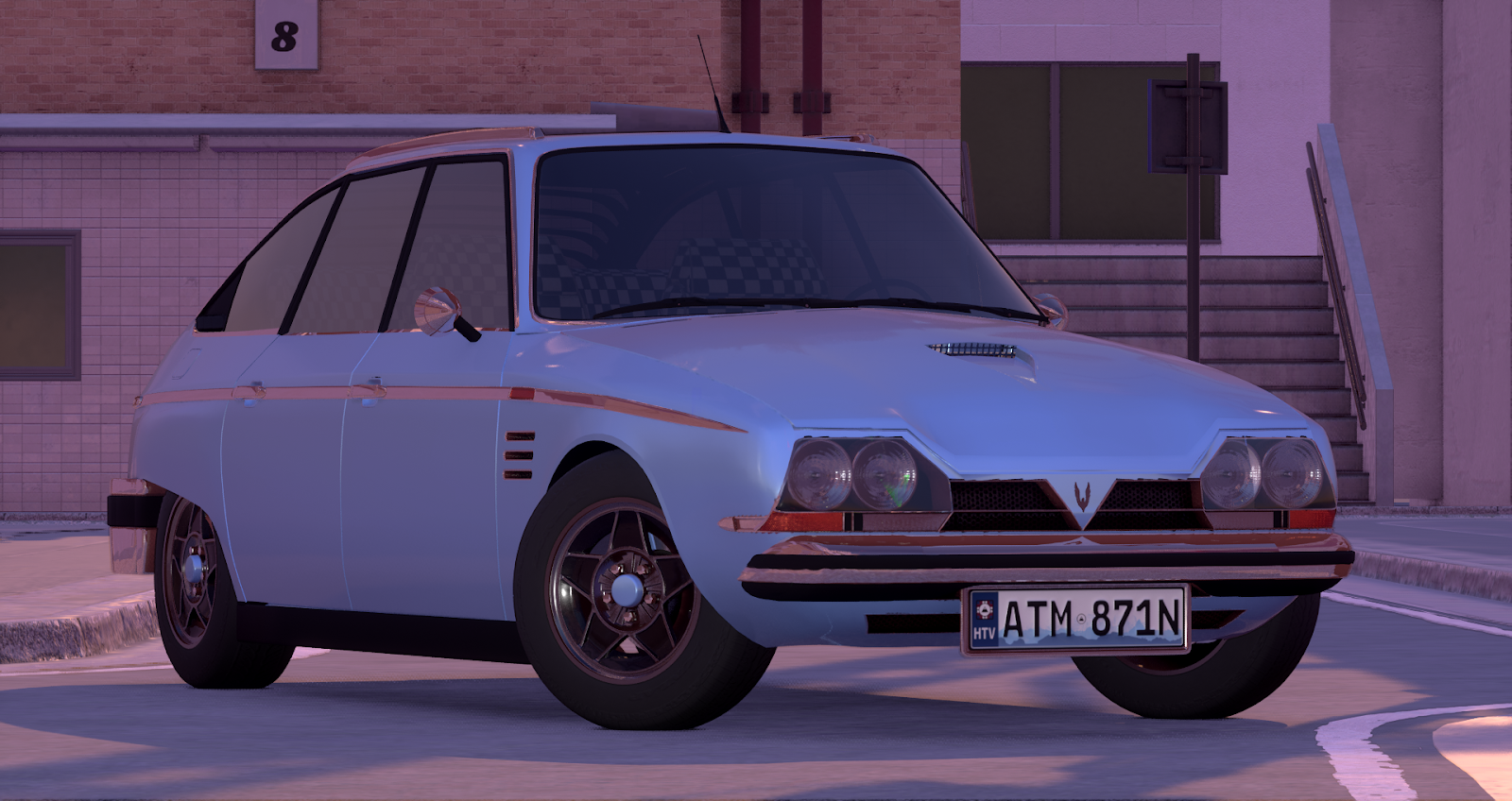
(Swanson 225 SF by @Ludvig)
Perhaps the most impressive thing about the PW, though, was that it wasn’t the best Swanson could do. Sure, the PW is a great family car, but… what if you could have a family sports car?
Yup, the Swanson 225 SF; a sports sedan. A hard recipe to make even today, and yet Swanson aced it in the 60’s. Compared to its sensible sibling, a 5th transmission gear helped it gain speed faster, rear discs helped lose it, and better sports-grade tires helped maintain it. It had been weight shedded with a sport-focused interior, and its engineers had used dark magic to materialise some even-higher quality parts.
Now to be clear, in raw performance this car was outclassed by most actual sports cars. But for a Boxer-6 with 4 doors, 7.4 seconds to 100 and a whole 1.0g cornering (in the right conditions) was still insane! And when it came to subjective driving feel, it actually beat most of the cars faster than it; even today, the SF’s controls are compared favourably to game controllers in how responsive and satisfying they were to use.
So what’s the catch to this one? …20,000 dollars. Well, $19,500, technically. Still over $4,000 more than its regular version. And still loitering pretty close to premium territory, even by Aragan standards. You also had to be careful where you took it, since it struggled to handle even most potholes. And at the time some of the design elements, such as the colored star rims or rear-window louvers, were a bit divisive among buyers.
Really though, that was it. The SF just about matched the PW in most all of its strengths, being just-about as efficient, reliable, comfortable, and safe. Its real accomplishment was being a competent, practical sedan that met general market needs, while offering such a high fun factor, all at once. So while a bit too expensive to truly achieve mass-market appeal, this car gained strong popularity among driving enjoyers and enthusiasts across Araga.
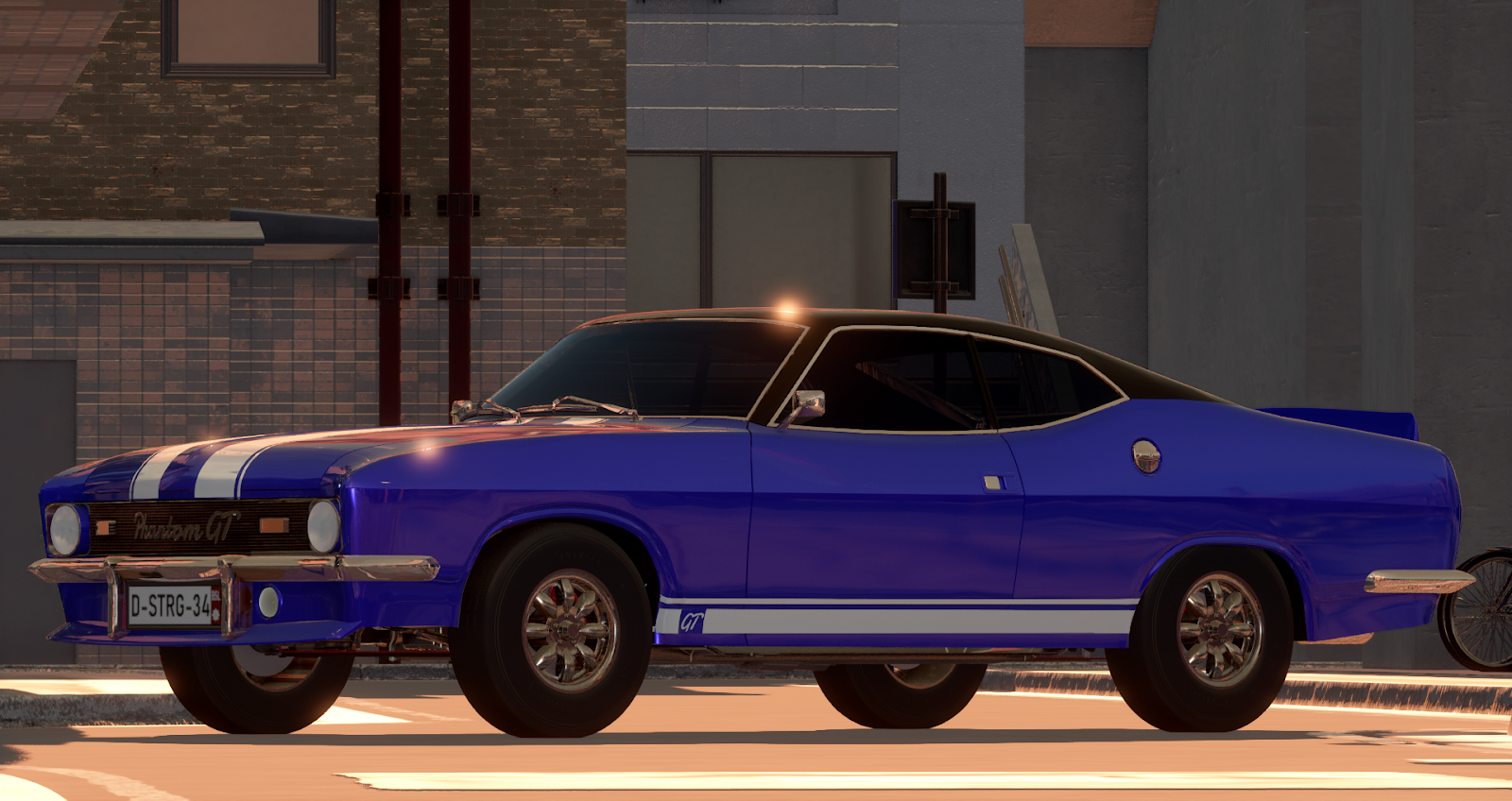
(Nerruci Phantom GT by @04mmar)
And now, from the segment’s most refined vehicle, to one of its least. Nerruci also came out with a performance model in 1967. …Well, actually they’d intended to release it for 1965, but had had production delays with the engine (OOC: you had your engine variant set 2 years after your trim year. Tsk-tsk…).
The 1967 Nerruci Phantom GT, this time a coupe, had inherited most of the problems of its sedan sibling; actually, most of them were worse now. Despite shedding the rear doors and bench (in favor of 2 jump seats), the GT was even heavier and less efficient. While ownership costs of the sedan had been disappointingly high, the costs of the GT were flat out outrageous. And the Phantom had always been an unreliable car, but the GT turned out to be one of Araga’s most unreliable cars (beaten only by the Asakuras)!
Except this time, Nerruci had found a way to justify its car’s problems; with a 6L V8 making 369hp. Yeah, now that LSD actually had some traction to control. Now, this Phantom was good for 100kmh in 5.8 seconds. Now it was good for 200 in 18 seconds, in a price range where 200kmh was usually “wishful thinking at best.” Now, the brakes had actually been calibrated correctly, and now with manual steering & transmission, you could at least feel some sense of control over this unrefined beast. Now, you didn’t mind the lack of refinement anymore, because it meant you could get this bonkers battleship for $16,800.
The Phantom had finally become the hardcore-American muscle car it’d always wanted to be. Such a shame that, as we learned from the Mercer Tarantula in the Sports category, Araga wasn’t the place American muscle cars. And bad news for the Phantom; the Mercer was easily the better built, better performing American muscle car. The good news, though, was that we aren’t in America…
The Mercer was 60 points more powerful, at 430hp- but because it had gotten most of its power from old-fashioned displacement instead of prestigious fuel injection, it had comically-terrible economy & tax figures (29L/100km, $5390/yr) that made even the Phantom’s awful costs seem reasonable (17.6L/100km, $2072/yr). The Tarantula was also heavier and had a lower top speed, negating its performance advantage; in the Traditional American quarter-mile, their times were nearly identical… But the market for big American muscle cars just wasn’t there. Ultimately, the choice between the two came down to personal taste. The Mercer was built better and was a better platform for upgrades and tuning, but it was more expensive too. The Phantom had four seats, but most tuners stripped them out anyway. Just mind the rust, on either car.





























